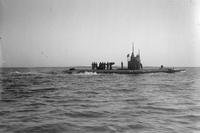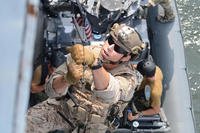The business of building submarines can literally be a race to the bottom. That’s not a metaphor; that’s just what submarines do. But submarines are, of course, required to do a lot more than sink below the surface.
In the United States Navy, some submarines are used as part of our nuclear triad, carrying ballistic cruise missiles to the enemy. Other subs exist to gather intelligence. One thing is clear: All American submarines are expected to resurface.
Spain’s eagerly awaited S-80 submarine, the Isaac Peral, couldn’t even do that. In theory, at least.
The country’s newest subs were supposed to replace the aging submarines built during the Cold War. These diesel-electric fast attack subs were effective but old. They first entered service in 1977, and by the early 2000s, Spain was ready to commission and build a homegrown class of diesel-electric submarines with some pretty advanced fuel and engine features.
First off the line would be the Isaac Peral, named for the naval engineer who built the first electric-powered submarine for Spain in 1888. With one torpedo tube and a surprisingly long range for the time, it was the very first submarine that was completely capable for military use.
Despite some shortcomings, the early design was so advanced that it could outperform some boats built 20 years later. The ship named in his honor some 125 years later -- and its designers -- didn’t quite live up to the name. At least, not at first.

The first in the S-80’s class was commissioned in 2003, but economic trouble in Spain delayed its design and construction by a decade. In that time, engineers noticed a critical design flaw: The boat was an estimated 100 tons heavier than they expected. One of the designers, it turns out, put a decimal point in the wrong place somewhere down the line.
This meant the sub, once submerged, may never make it back to the surface, which is (again) very important for submarines and their crews.
So the Spanish shipbuilder assigned to the S-80 class, Navantia, called in some backup from General Dynamics to assist. The solution they came up with was to increase the size of the Isaac Peral, lengthening it by more than 30 feet and adding a pressure ring to support that length.
Everything looked like it would turn out OK with the new design. It would be a little heavier and a little longer than intended, but for the most part, they could continue building the sub.
Until 2018, that is. Spanish authorities, armed with the new size of the submarine, noted that the Isaac Peral was too big for the port of Cartagena, where it’s currently being built. Somehow it took the Spanish a full five years to realize this fact.
To accommodate the newest member of the Spanish Navy, the port of Cartagena will be expanded and dredged. Barring any further delays, missed decimals or anything else out of the ordinary, the fleet of submarines is expected to be in operation by 2027.
The Isaac Peral was christened in April 2021, and was, by all accounts, able to resurface.
-- Blake Stilwell can be reached at blake.stilwell@military.com. He can also be found on Twitter @blakestilwell or on Facebook.
Want to Learn More About Military Life?
Whether you're thinking of joining the military, looking for post-military careers or keeping up with military life and benefits, Military.com has you covered. Subscribe to Military.com to have military news, updates and resources delivered directly to your inbox.















